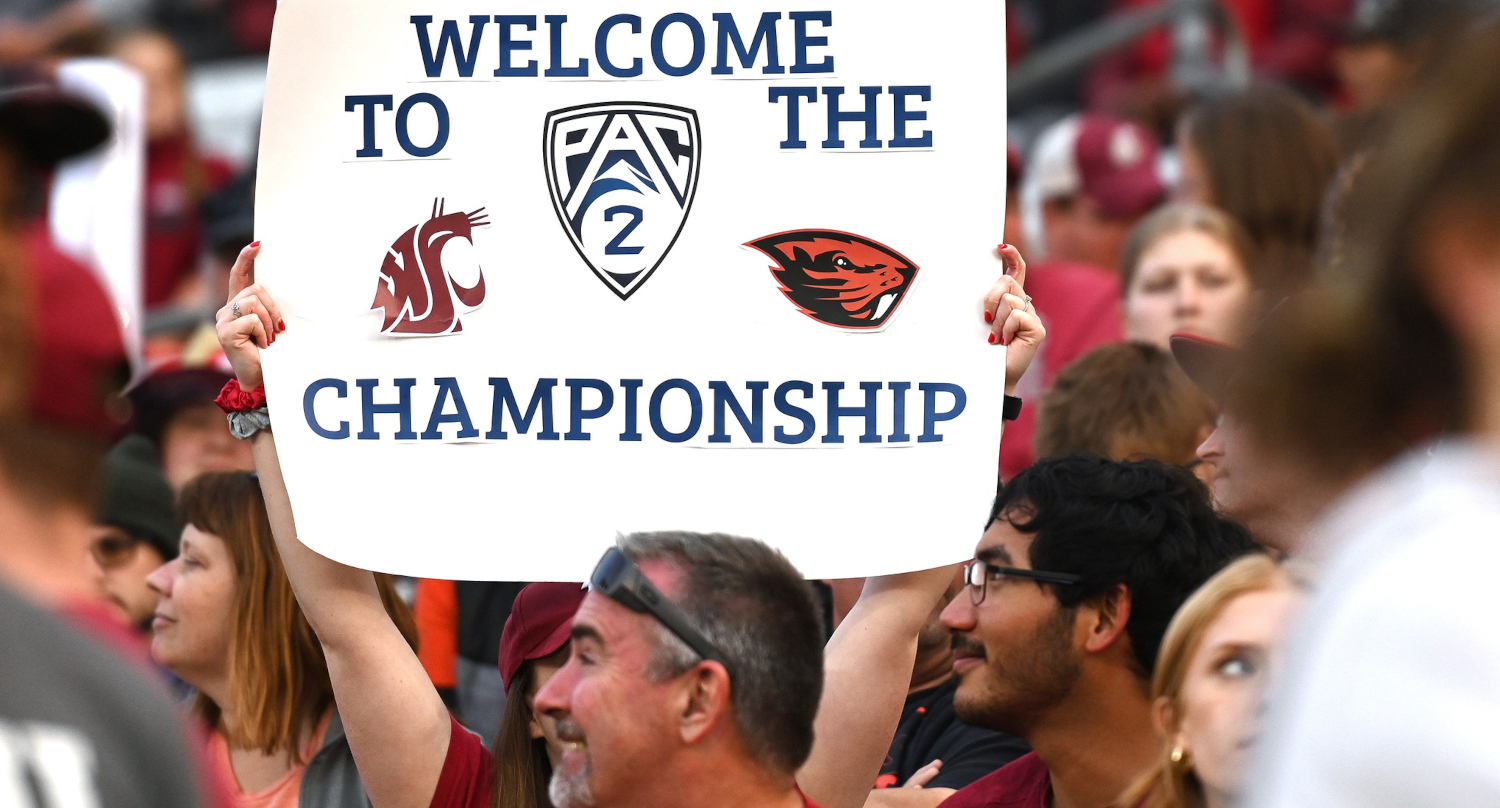It was the summer of 1993, and my husband and I were taking our first road trip south on the legendary Pacific Coast Highway, starting our drive in San Francisco and ending in Los Angeles. Our rental car clung to the outside lane of the highway winding up into Big Sur and dipping down to rocky beaches where seals and sea lions sunned themselves. But even as I exclaimed over the natural beauty unspooling before us, I was itching to reach whatever cabin or motel we’d booked for the night, so that I could pick up Donna Tartt’s “The Secret History” and dive in where I’d left off.
Washington
Review | ‘The God of the Woods’ should be your next summer mystery

Tartt’s best-selling debut novel had recently come out in paperback, and it was my “vacation read” — more like “vacation immersion.” The eerie atmosphere of that novel so affected my mood that, forevermore, California redwoods have been conflated in my mind with the dark forest surrounding a small Vermont college where a fictional murder occurred.
This summer, I once again felt that all-too-rare sense of being completely possessed by a story as I read “The God of the Woods,” by Liz Moore. There are some superficial similarities between the two novels: Both are intricate narratives featuring young people isolated in enclosed worlds — in Tartt’s story, a small cohort of classics students at the aforementioned college (modeled on Bennington); in Moore’s, a summer camp within a vast forest in New York’s Adirondack Mountains. A sense of predetermined doom also pervades both books. But the most vital connection for me is the beguiling force of these two literary suspense novels. For those susceptible to its pull, “The God of the Woods,” like “The Secret History,” transports readers so deeply into its richly peopled, ominous world that, for hours, everything else falls away.
There’s more than a touch of Gothic excess about “The God of The Woods,” beginning with the premise that not one, but two children from the wealthy Van Laar family have disappeared 14 years apart. When the novel opens in August 1975, an Emerson Camp counselor discovers that 13-year-old Barbara Van Laar is missing from her bunk. Barbara was conceived after the disappearance of her brother in 1961. Peter “Bear” Van Laar, a boy as playful and adventurous as his nickname, was 8 when he vanished from “Self-Reliance,” the Van Laar’s summer house that adjoins the camp. (The cosseted Van Laar family clearly has a weakness for referencing — if not internalizing — the do-it-yourself gospel of transcendentalist Ralph Waldo Emerson.) The surrounding woods and nearby Lake Joan were searched exhaustively, but no trace of the beloved Bear was ever found. Coincidentally, at the time of both disappearances, a convicted serial killer was spotted traipsing around the area. This fiend, named Jacob Sluiter, informally known as “Slitter,” belongs to an old family who once owned the land holdings that became the Van Laar Preserve.
To summarize the plot of “The God of the Woods,” thusly, risks making this nuanced literary suspense novel sound like a campfire tale generated by AI. (A serial killer! Terrified campers lost in the woods!) Rather than a straightforward sensational yarn, Moore’s story jumps around non-sequentially from the 1950s through the 1970s and is crowded with characters: campers, counselors, the Van Laars and their tony houseguests, townspeople and local police. Throughout, Moore’s language is unflaggingly precise. Here’s her omniscient narrator describing a girl named Tracy, Barbara’s bunkmate, who suffers from low self-esteem. And, little wonder why:
“[Tracy’s] father once told her casually that she was built like a plum on toothpicks, and the phrase was at once so cruel and so poetic that it clicked into place around her like a harness.”
As wise as it is about the vulnerability of adolescence, “The God of the Woods” is also chillingly astute about the invisible boundaries demarcating social class. Take, for instance, the character of Judyta “Judy” Luptack, a 26-year-old woman from a working-class Polish American family who’s been newly promoted to “junior investigator” on the otherwise all-male police team searching for Barbara. Stationed inside the Van Laar mansion, Judy has the increasingly urgent need “to pee”:
“She’s not certain what procedure is. Nowhere in her training did she come across this exact scenario: What do you do if you’re in someone’s private home for hours and hours with no access to the outside world? Rich people especially. She doesn’t want to ask these people for anything. If she were a man, she’d [go] in the woods.”
Moore’s superb 2020 crime novel, “Long Bright River,” went deep into issues of addiction and entrenched poverty while exploring the opioid crisis in Philadelphia; “The God of the Woods” heads off into different territory — weird and uncanny — and yet, it too offers strong social criticism. As it unfolds, “The God of the Woods” becomes more and more focused on how its female characters break free — or don’t — of the constraints of their time and social class. Whatever the case, breaking free of the spell Moore casts is close to impossible.
Maureen Corrigan, who is the book critic for the NPR program “Fresh Air,” teaches literature at Georgetown University.

Washington
Pac-12 website now a lonely place after shedding departing members

Everything about conference realignment and the total annihilation of the history and tradition of college athletics is coming into focus with the new football season fast approaching. For the Pac-12, that means what once was the Conference of Champions has now become a ghost town.
As Pac-12 Network has shut down operations, some staff and on-air talent have moved over to the Big Ten Network to provide coverage of the four west coast teams that have joined their traditional Rose Bowl counterparts (Oregon, Washington, USC, UCLA).
The so-called “Four Corners” schools are now a part of the Big XII including the returning Colorado as well as Utah, Arizona, and Arizona State.
And somewhat incomprehensibly, California and Stanford are now part of the Atlantic Coast Conference (with SMU) in perhaps the most bizarre realignment of them all.
That’s left the Pac-12 with just two unwanted castoffs, Oregon State and Washington State. And with many of these realignment deals now becoming official ahead of the 2024-2025 academic calendar, the fallout is becoming very real.
The most stark realization is a trip to the Pac-12 website, which is now dedicated to the remaining Pac-2… and not much else.
The banner headline is the CW-Fox home football schedule that was struck earlier this year to gain distribution nationally for the former Power 5 schools. That story is dated all the way back to May 14th.
The news archives are stories that are only dedicated to the two remaining with the last story referencing any of the departed schools being the Pac-12 rowing championships won by Stanford (women) and Washington (men) respectively.
The only functioning schedule on the site is the current football schedules for Oregon State and Washington State with pretty much everything else unknown at this point.
Finally, here’s what the bottom banner of the website looks like with links to OSU and WSU athletics.

It’s a sad reminder of what’s been lost through conference realignment and also a jarring reality of the future that faces the Pac-2. If they can’t strike a deal with the Mountain West or another conference to keep the brand in tact, it might not be too long before it’s totally gone for good.
Washington
Advice | Amy Dickinson says goodbye in her final column

But I’m leaving this seven-day-a-week commitment — because I want to, and because it’s time. My intention is to move on and to do other meaningful work.
Writing this column has given me a glimpse into thousands of lives. The insight I have gained has inspired and empowered me to listen to my own counsel, to be authentic in my actions and to — basically — be in charge of my own life, as much as possible. Showing myself the door at this moment reflects the privilege of good health, strong relationships, years of steady employment and some prudent financial choices. I’m very aware of how lucky I am.
My favorite way to envision this work is to picture families reading these columns together at the breakfast table and weighing in with their own points of view before reading mine. And yes, there are still parents and grandparents out there who clip the newspaper and send pertinent columns to kids in college or summer camp, or tape it to refrigerators and bathroom mirrors. I’ve heard from health-care workers, police officers, firefighters and office workers who say they discuss the issues raised in the column in the break room.
I love knowing that, and I’ll miss having coffee with you.
The questions raised in this space have been used as teaching tools in middle schools, memory care units, ESL classes and prisons. These are perfect venues to discuss ethical, human-size dilemmas. On my last day communicating with you in this way, I feel compelled to try to sum up my experience by offering some lasting wisdom, but I’ve got no fresh insight. Everything I know has been distilled from wisdom gathered elsewhere.
Boxer Mike Tyson famously said, “Everybody has a plan, until they get punched …” Punches are inevitable. But I do believe I’ve learned some universal truths that might soften the blows.
Be gentle with yourself — and with others.
Lead with kindness, and recognize kindness when you receive it.
Reserve your harshest judgment. Sit on your worst thoughts about other people and consider the consequences before expressing them.
Be of service by finding something, or someone, to take care of.
Find creative ways to express your feelings.
Admit to your faults and failings, and resolve to do better.
Work hard not to be defined by the worst things that have happened to you.
Recognize even the smallest blessings and express gratitude.
Be kind to receptionists, restaurant servers, dental hygienists, and anyone who needs to physically touch or serve you to do their job.
Understand that there are times when it is necessary to give up.
Identify, develop, or explore your core ethical and/or spiritual beliefs.
Recognize and detach from your own need to control someone else.
Respect boundaries — yours and others’.
Seek the counsel of people who are wiser than you are. Ask their advice, and listen.
I sometimes supply “scripts” for people who have asked me for the right words to say, and so I thought I would boil these down to some of the most important statements I believe anyone can make.
I love you, just as you are.
Now that I’m near the end of my movie, I hope you’ll pay attention to the end credits.
Many thanks to Chicago friends and colleagues, including Jim Warren, who found me, Ann Marie Lipinski, who hired me, Steve Mandell, who represented me, and editors Mary Elson, Bill O’Connell and Carrie Williams. Thank you to “Gentleman Jack” Barry, who softened my exit.
And especially to Tracy Clark, a talented novelist who has helped to correct my faulty thinking and grammar for many years.
Finally, much gratitude to faithful readers, who can find me on social media and through my regular newsletter.
© 2024 by Amy Dickinson. Distributed by Tribune Content Agency.
Washington
Kinkajou found abandoned and wandering Washington state road

Peekaboo!
A small raccoon-like mammal known as a “kinkajou” was rescued earlier this week after being found climbing a dusty Washington road pole. The nocturnal critters are indigenous to the rainforest and were once made popular as an exotic pet by Paris Hilton.
The rescued kinkajou was seen peeking around a wooden sign pole at a rest area in East Selah, Yakima County, according to a photo posted to X Monday by the Washington State Department of Transportation.
The agency says it wasn’t sure if the kinkajou, also known as a honey bear, was dropped off there or escaped, but it has since been brought to the Association of Zoos and Aquariums for a comprehensive wellness exam at its animal hospital.
KINKAJOU BARGES INTO FLORIDA WOMAN’S APARTMENT, ATTACKS HER BOYFRIEND, OFFICIALS SAY
A small raccoon-like mammal known as a kinkajou was rescued this week after being found climbing a dusty Washington state road pole. (Washington State Department of Transportation I SGranitz/WireImage )
“We are awaiting the results of diagnostic testing, including comprehensive blood work, to get a complete assessment of his health,” the zoo posted to Facebook along with a short video of the examination.
Head Veterinarian Dr. Karen said the young kinkajou is in fair health overall but is very thin, weighing only 2½ pounds. He has a good appetite, and staff is feeding him a full and healthy diet, the zoo said in the post.
“This young kinkajou’s survival is a testament to the collaborative efforts of state wildlife law enforcement and the Zoo, highlighting the dangers of the illegal pet trade,” the post added.
The zoo said that while kinkajous are not endangered, they are hunted for fur, meat and the exotic pet trade, which threatens their wild population. Its skin is often used to make wallets and horse saddles.
PARIS HILTON BITTEN BY PET KINKAJOU

A small tree-hugging “kinkajou” was rescued this week after being found climbing a dusty Washington road pole. (Washington State Department of Transportation I Point Defiance Zoo & Aquarium, right.)
Kinkajous live in tropical rainforests from southern Mexico through Brazil. They are small carnivores with prehensile tails, often mistakenly called primates, the zoo said.
The kinkajou has sandy yellow fur, a round head, large black eyes and a short, pointed snout as well as short limbs. Mature kinkajous can weigh up to about 10 pounds and stretch to 52 inches in length. They feed on fruits, roots, shoots, nuts and seeds.
“Despite their cuteness, kinkajous do not make good pets,” the zoo said, although that hasn’t stopped socialite Hilton from owning one.
The influencer and activist has been pictured in the past holding a kinkajou she called “Baby Luv.”
CLICK HERE FOR THE FOX NEWS APP

Kinkajou Harley is held by San Francisco Zoo Education Specialist Amy Goodwin during an event at the San Francisco Zoo & Gardens at the Willie Woo Woo Wong Chinese playground Feb. 17, 2016, in San Francisco. (Leah Millis/San Francisco Chronicle via Getty Images)
Baby Luv bit Hilton in the arm in 2006, prompting her to go to a hospital, where the wound was treated and given a tetanus shot.
The National Institutes of Health says kinkajou bites require the usual tetanus prophylaxis, rabies vaccine and wound cleaning. In most cases, antibiotics are prescribed to prevent the development of cellulitis or osteomyelitis.

Paris Hilton attends the 2023 LACMA Art+Film Gala at the Los Angeles County Museum of Art Nov. 4, 2023, in Los Angeles. (Emma McIntyre/Getty Images for LACMA)
The zoo said the kinkajou is recuperating at the zoo while officials look to find it a permanent home.
-

 News1 week ago
News1 week agoTracking a Single Day at the National Domestic Violence Hotline
-

 World1 week ago
World1 week agoIs Israel’s Smotrich fulfilling his dream of annexing the West Bank?
-

 World7 days ago
World7 days agoIsrael accepts bilateral meeting with EU, but with conditions
-

 News1 week ago
News1 week agoSupreme Court upholds law barring domestic abusers from owning guns in major Second Amendment ruling | CNN Politics
-

 Politics1 week ago
Politics1 week agoSupreme Court upholds federal gun ban for those under domestic violence restraining orders
-

 Politics1 week ago
Politics1 week agoTrump classified docs judge to weigh alleged 'unlawful' appointment of Special Counsel Jack Smith
-

 World1 week ago
World1 week agoNew Caledonia independence activists sent to France for detention
-

 News1 week ago
News1 week agoA Florida family is suing NASA after a piece of space debris crashed through their home















